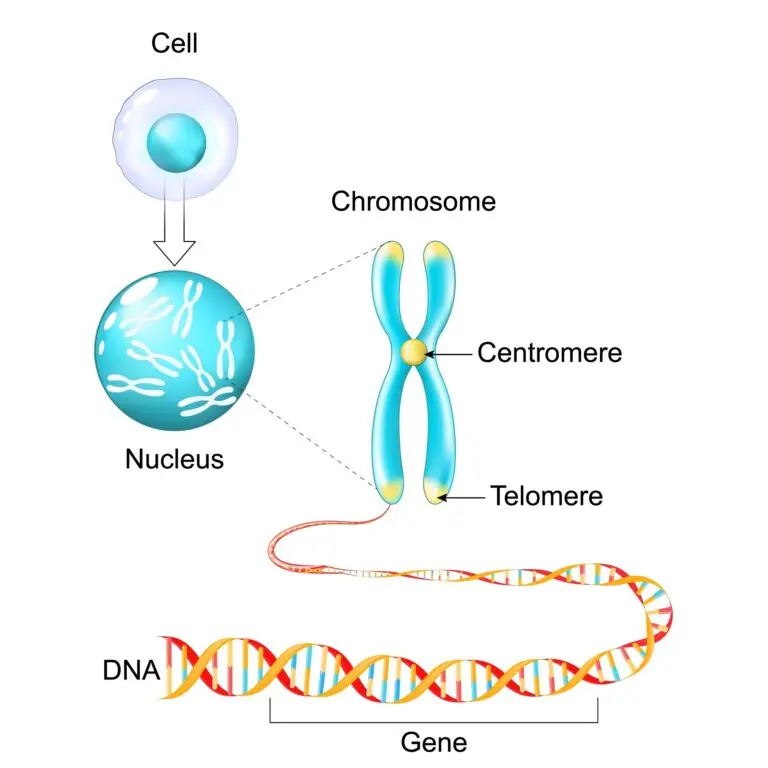Chromosome

Table of Contents
What is a Chromosome?
A chromosome is a thread-like structure composed of DNA and proteins found in the nucleus of a cell. It carries genetic information in the form of genes, which are segments of DNA that encode instructions for the synthesis of proteins and other molecules essential for the functioning and development of organisms.
Chromosomes are responsible for the transmission of hereditary traits from one generation to the next during cell division. In humans, the nucleus of each cell typically contains 23 pairs of chromosomes, for a total of 46 chromosomes.
Structure of Chromosomes
DNA (Deoxyribonucleic Acid)
DNA is the primary genetic material found in chromosomes. It contains the instructions needed to build and maintain an organism. The DNA in chromosomes is organized into genes, which are specific sequences that code for proteins or functional RNA molecules.
The DNA molecule has a double helix structure, resembling a twisted ladder, with nucleotide bases (adenine, thymine, cytosine, and guanine) forming the rungs and sugar-phosphate backbones forming the sides.
Proteins
Proteins play a crucial role in maintaining the structure and function of chromosomes. Histones are a type of protein that helps package and organize the DNA into a compact structure. DNA wraps around histones to form nucleosomes.
Non-histone proteins have various functions, including regulating gene expression, assisting in DNA replication, and ensuring the proper separation of chromosomes during cell division.
Centromere
- The centromere is a specialized region of a chromosome where the two sister chromatids are connected.
- During cell division, the centromere plays a crucial role in ensuring that each daughter cell receives the correct number of chromosomes.
Telomeres
Telomeres are protective caps at the ends of chromosomes. They consist of repetitive DNA sequences and help prevent the loss of genetic information during DNA replication.
Sister Chromatids
Before cell division, each chromosome replicates, resulting in two identical copies called sister chromatids.
Sister chromatids are held together at the centromere and are eventually separated during cell division, ensuring that each daughter cell receives a complete set of chromosomes.
Human Chromosomes
- Humans typically have 23 pairs of chromosomes, making a total of 46 chromosomes.
- The first 22 pairs are called autosomes, while the 23rd pair determines an individual’s sex and is known as sex chromosomes (X and Y).